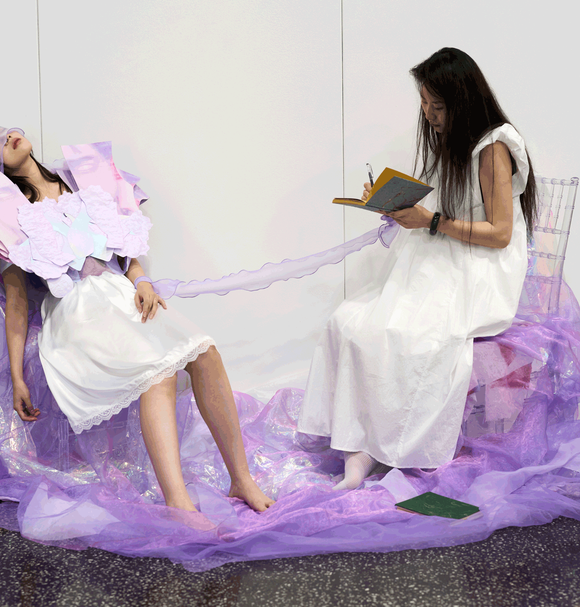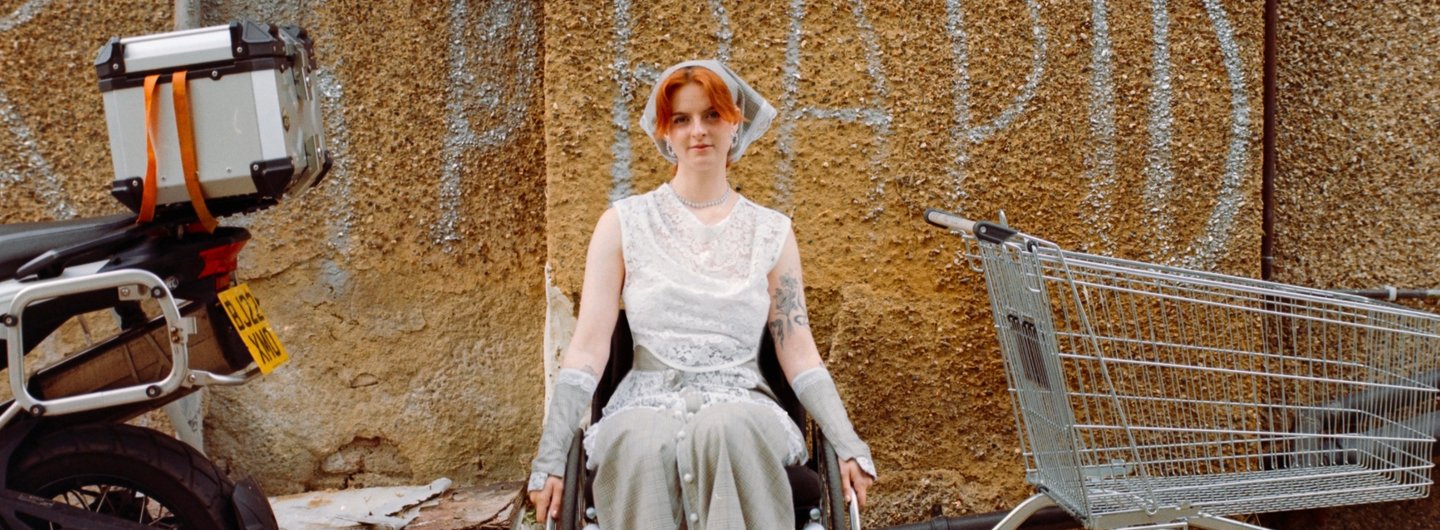
Key details
Date
- 17 September 2025
Author
- RCA
Read time
- 7 minutes
Ahead of London Fashion Week, discover the RCA Fashion alumni who are transforming materials, bodies and ideas to redefine fashion’s future
Fashion has always been a space for self-expression, but this year’s graduating designers from the RCA Fashion MA are pushing it far beyond surface and trend. Their work reveals fashion as a site of transformation, storytelling, and innovation – whether through technology, inclusivity, sustainability, or deeply personal myth-making. Each collection speaks to a reimagining of what clothing can mean and do, offering not just garments but portals into new ways of seeing ourselves and the world.
Across these practices runs a refusal of fixed boundaries. Dhanashree Kadlag merges digital avatars with mythic forms to imagine fluid, ever-evolving bodies that blur the human and the machine. Ben Savizon confronts inherited rituals of shame through interactive sculptures that turn discomfort into a space of radical possibility. Huiji Jin rewrites the rules of everyday design with garments that dismantle barriers for wheelchair users, proving that accessibility can be as innovative and expressive as high fashion. And Isab Taylor transforms waste fish skins into sculptural textiles, finding overlooked potential in natural materials and challenging the industry’s reliance on extractive systems.
What unites them is a desire to expand fashion’s purpose: to empower, to disrupt, and to build futures not yet imagined. Whether through empathy, play, or material experimentation, these designers demonstrate how fashion can be more than an industry – it can be a site of agency, connection, and cultural change.
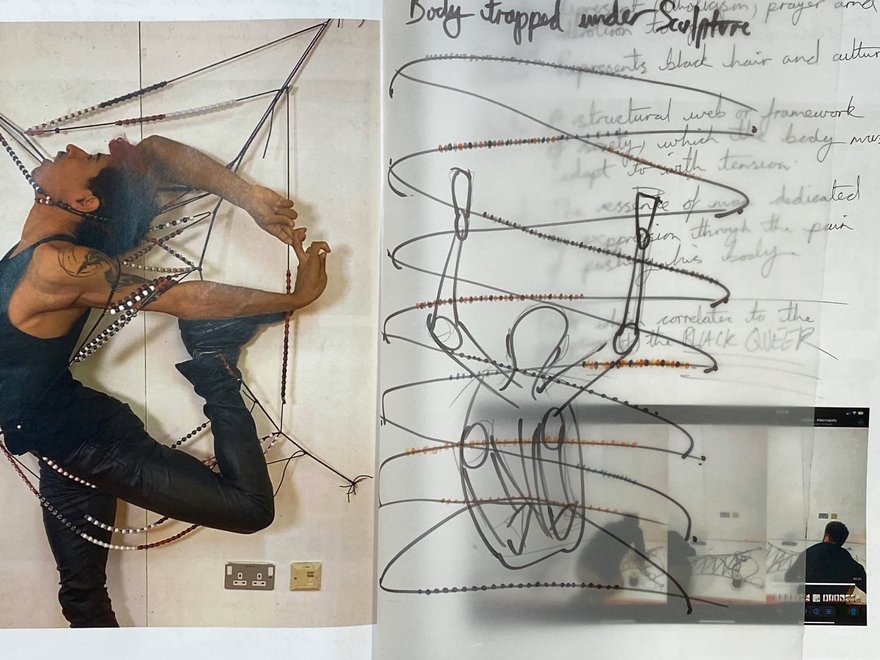
Ritual Technology Series - Sculpture 1 (2025) Ben Savizon
Ben Savizon
Tell me about your graduating project; the ideas behind it, and what you hope audiences take away.
Ritual Technology is a series of sculptures that come alive through interaction. The work confronts the biblical and cultural shame I inherited from my Christian-Caribbean upbringing, in contrast with my queer values. I want audiences to feel both curiosity and discomfort – to confront the inherited rules and rituals that shape their desires and beliefs.
How would you like to make a difference in the world of fashion?
I want to create experiences where bodies meet devices, materials, and environments in unexpected ways. I see myself continuing as an art practitioner while also curating and building platforms for radical work. My goal is to amplify voices at the edge of culture and explore the potential of spaces where that work can thrive.
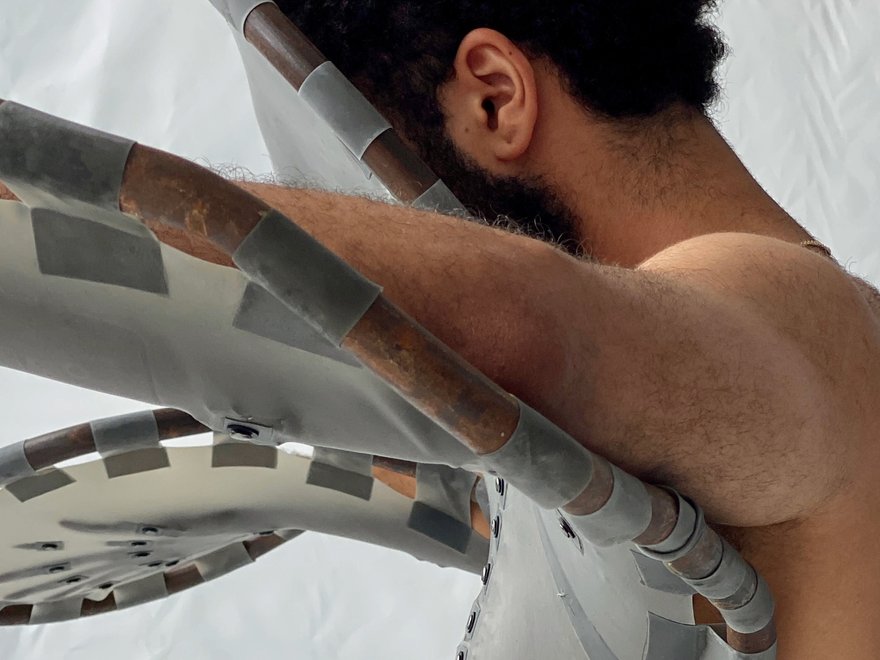
Ritual Technology Series - Sculpture 1 (2025) Ben Savizon
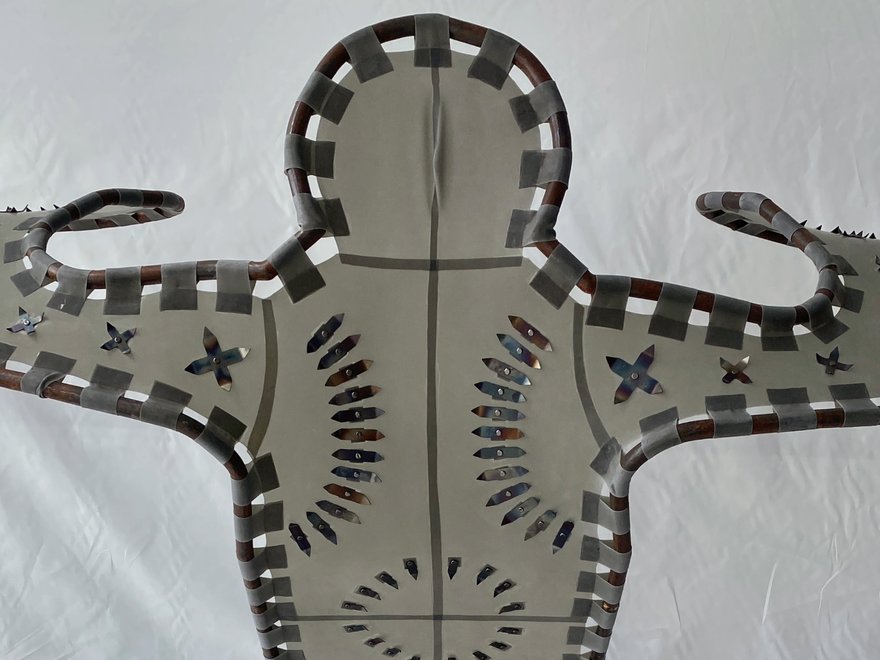
Ritual Technology Series - Sculpture 1 (2025) Ben Savizon
How does your work fit into your wider creative approach and personal values?
My practice moves between poetry, research, and making. I start with personal experience and then situate it within wider culture and history, weaving mythology, religion, and ritual into material form. I use craft to carry meaning and intention, balancing chaos with order, and creating space where outsiders can be fully seen.
Huili Jin
Tell me about your graduating project; the ideas behind it, and what you hope audiences take away.
This project rethinks how trousers are designed and worn, with a focus on independence for wheelchair users. My top-down dressing concept allows trousers to be put on while seated, removing a daily barrier. Every fabric choice, seam, and technique was considered to ensure both comfort and dignity. I hope audiences take away the idea that inclusive design is not an afterthought but central to fashion’s future.

Capturing the daily life of wheelchair users. Design by Huili Jin, modelled by Zander Cossham. Photo by Yunhao Zhang.
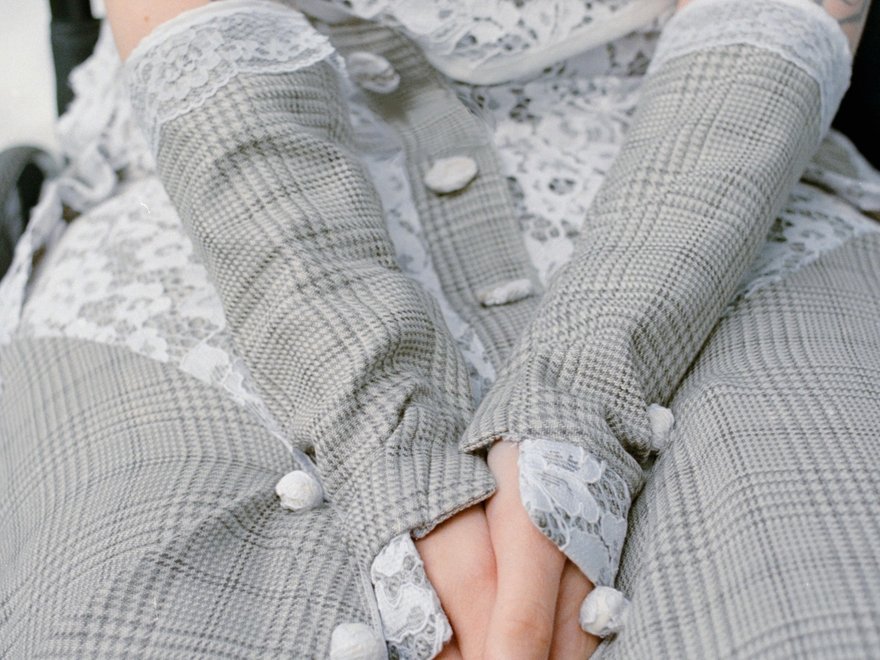
Capturing the daily life of wheelchair users. Design by Huili Jin, modelled by Zander Cossham, photographed by Yunhao Zhang
How would you like to make a difference in the world of fashion?
I want to show that inclusivity and functionality can coexist with style. By focusing on the needs of wheelchair users, I hope to highlight accessibility as a driver of innovation, not limitation. My goal is to inspire other designers to expand their practices to consider diverse bodies and experiences, helping reshape fashion into a more human-centred industry.
How does your work fit into your wider creative approach and personal values?
My work always begins with human needs. I believe design should solve problems while celebrating individuality and self-expression. This project reflects my values of inclusivity, dignity, and collaboration, as it was created with my collaborator Zander. For me, design is a tool for positive social change – one that empowers as much as it beautifies.
Isab Taylor
Tell me about your graduating project; the ideas behind it, and what you hope audiences take away.
I work with waste fish skins to transform them into leather. While fish leather isn’t new, I want to reframe it within contemporary fashion and explore its untapped potential. By viewing it not just as a by-product but as a material of unique value, I hope to expand its applications in fashion.
Through the lens of sportswear, I developed a cycling-inspired top using perforated fish leather for stretch. I also collaborated with designers to test the material in new contexts – including a 3D-printed fish leather handbag with Oliver Haus. My project aims to show that fish skin, currently overlooked and underused, could be a valuable sustainable resource for the industry.
How would you like to make a difference in the world of fashion?
I want to continue as both material scientist and designer, innovating new textiles and contributing to a regenerative fashion system.
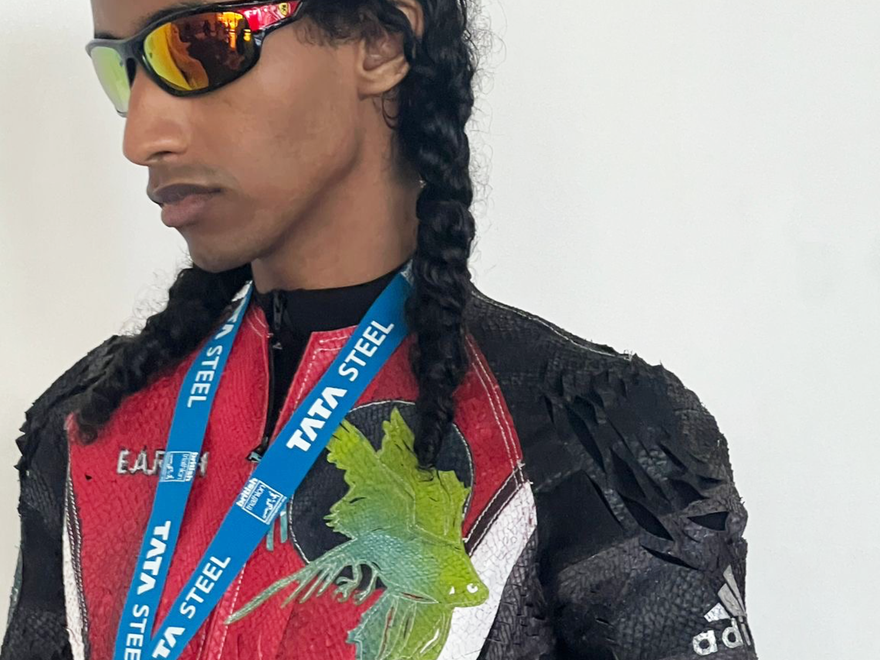
A cycling top made of fish leather, designed by Isab Taylor

A handbag made of fish leather, designed by Oliver Haus in collaboration with Isab Taylor
How does your work fit into your wider creative approach and personal values?
I’ve always loved nature and disliked the churn of fast fashion. For me, nature is the best designer, and protecting it is essential. While I’m fascinated by fashion as an art form, my drive comes less from dressing people and more from innovating materials.
As an identical twin, individuality is important to me, and I express this through intuitive, spontaneous working methods. I dislike over-researched projects – I find the magic comes from working instinctively. For me, the joy of fashion is 90% process; the outcome matters less than the energy and innovation of making.
Dhanashree Kadlag
Tell me about your graduating project; the ideas behind it, and what you hope audiences take away.
The Modular Body explores identity as fluid, fragmented, and ever-evolving. It began with my own search for self-expression, when neither the clothes I owned nor the body I was born into felt enough to express who I am. Online avatars gave me the freedom to shape identities that felt true, teaching me to see identity as constructed, transformative, and emotionally charged.
From this came The Swarm – a world where AI escapes control and surveillance is absolute. A hero merges with a sentient force, her modular body mutating into celestial, animalistic, and weapon-like forms that blur the boundary between human and machine. I translate these digital avatars into real garments: sculptural silhouettes, hyperreal prints, and silicone moulds inspired by my Maharashtrian roots, Indian mythology, and narrative research. Each look becomes a wearable avatar, offering clothing as a way to embody the inner self – especially for those whose gender or identity is not fully defined by their body or appearance.
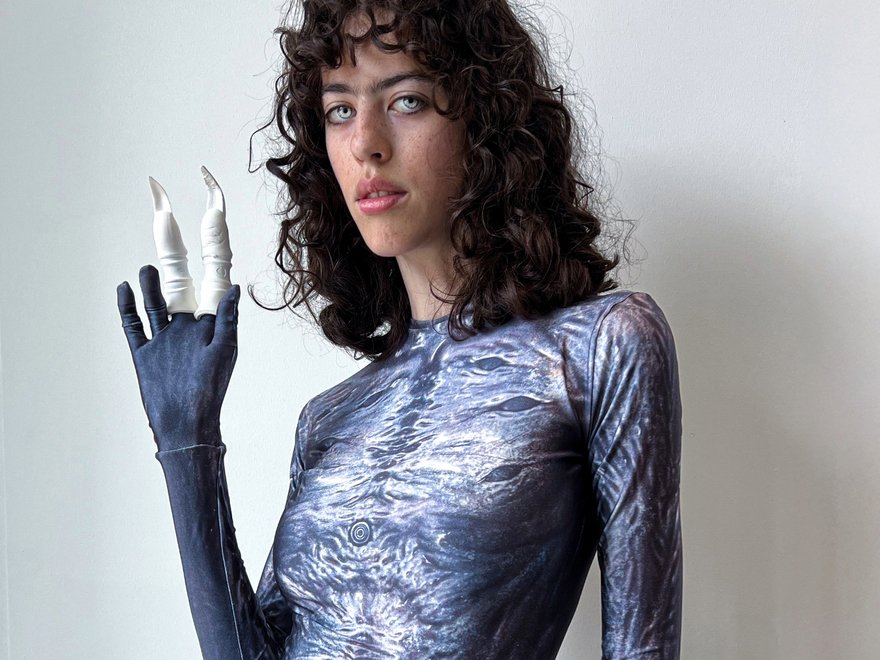
The Modular Body, design by Dhanashree Kadlag
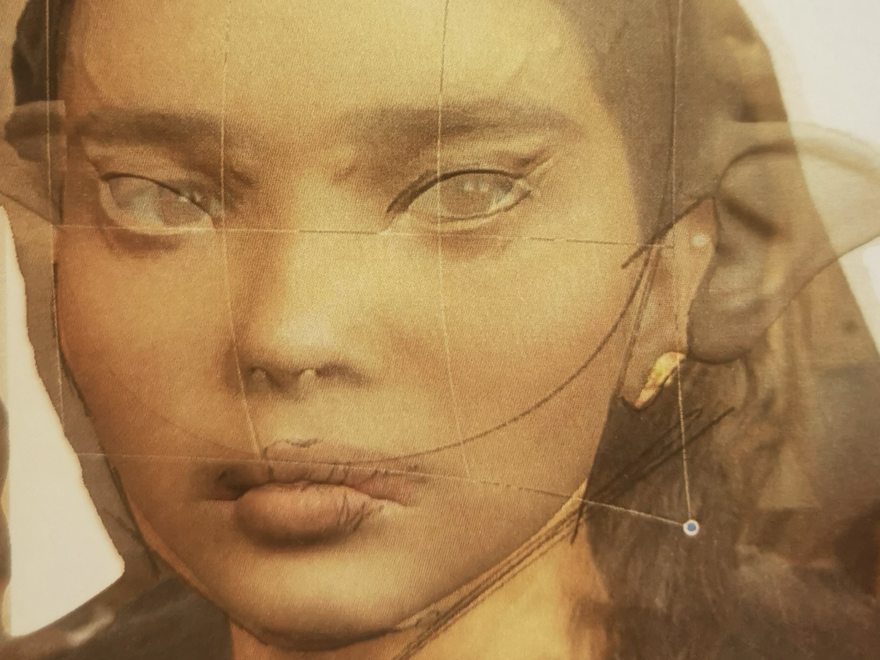
The Modular Body, design by Dhanashree Kadlag
How would you like to make a difference in the world of fashion?
I want to expand fashion beyond surface and trend, treating it as a medium for transformation, storytelling, and emotional truth. My garments act as second skins, revealing inner selves and challenging fixed ideas of gender, identity, and beauty. In a world shaped by surveillance, AI, and cultural shifts, I hope fashion can empower people to reclaim agency over how they are seen, to embody alternate selves, create new myths, and imagine possible futures.
How does your work fit into your wider creative approach and personal values?
My work is informed by posthumanist theory and Donna Haraway’s Cyborg Manifesto, which challenge rigid boundaries between human and machine, physical and digital, self and other. These frameworks allow me to explore hybrid, adaptable identities shaped by context, narrative, and interaction. I incorporate Indian mythology to imagine how identity transforms across narratives and futures, mapping these possibilities visually and emotionally.
My values – empathy, honesty, cultural respect – stem from my childhood in Sangamner, India. Growing up amid poverty and hardship, I found solace in anime and Indian deities whose exaggerated emotions mirrored real struggles. Stories like that of Goddess Kali gave me ways to process these experiences and imagine alternate futures. Through avatars and digital skins, I create work that encourages reflection, challenges norms, and connects wearers with their inner emotional landscapes.

